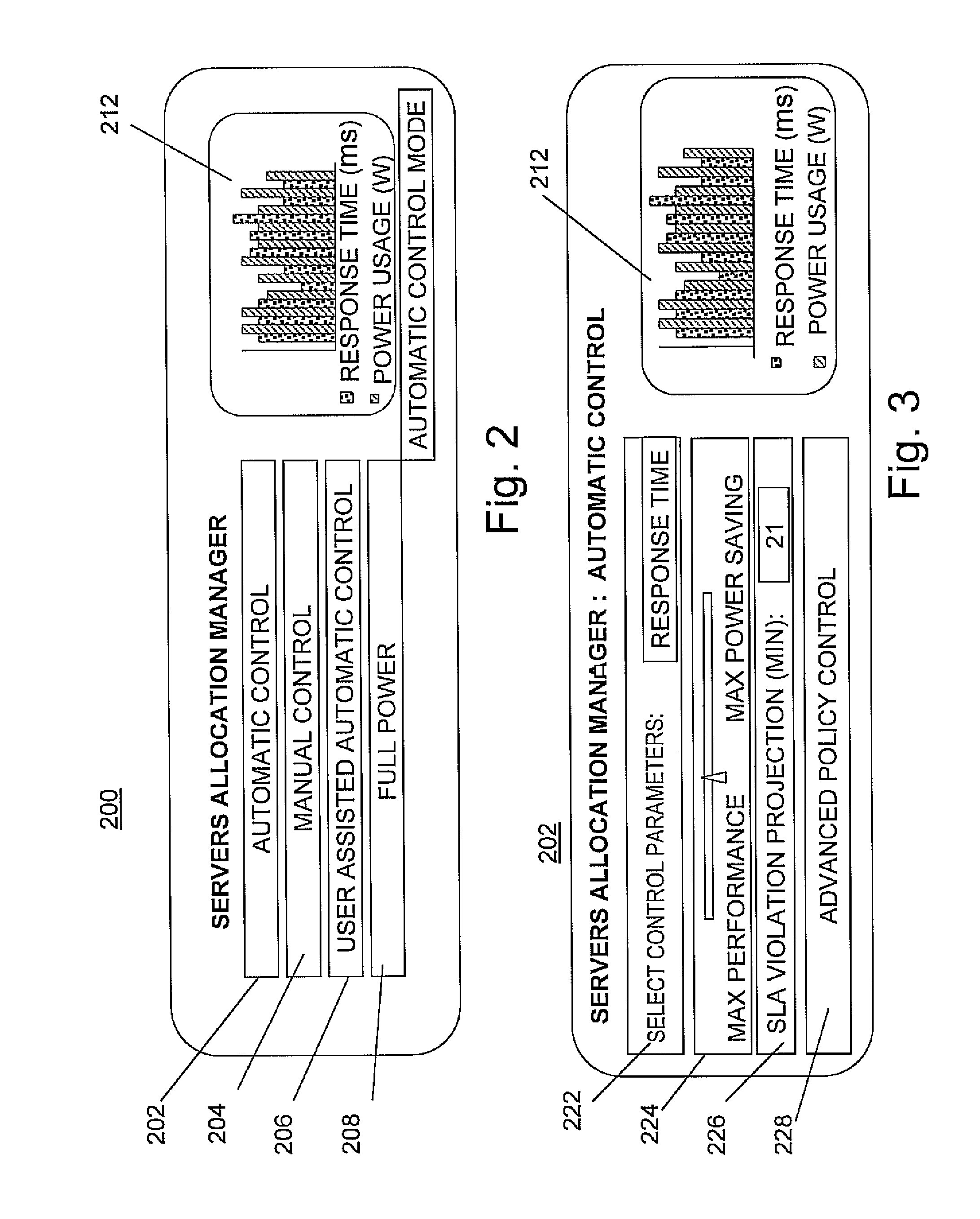Adaptive dynamic buffering system for power management in server clusters
a dynamic buffering and server cluster technology, applied in the direction of liquid/fluent solid measurement, sustainable buildings, instruments, etc., can solve the problems of system administrators' effort, data center server power consumption, and the cooling system to disperse the generated heat, so as to maximize the energy savings in the system
- Summary
- Abstract
- Description
- Claims
- Application Information
AI Technical Summary
Benefits of technology
Problems solved by technology
Method used
Image
Examples
Embodiment Construction
[0034]FIG. 1 illustrates an environment 10 in which the power management system and method of the invention may be employed. As shown in FIG. 1, the system includes: an on-Demand Router 20 that receives http requests from clients (not shown); two (2) server buffers including: an Active buffer 40 and a Ready buffer 60; an Allocation Manager 100; and, performance metric sensors 80. The On-Demand router 20 particularly receives incoming client requests and assigns the requests to one or more of the server devices in the active server buffer (alternately referred to as buffer active buffer pool. The Active Servers Buffer 40 includes computing devices, e.g., servers or server clusters 24 in various power states that are ready to accept workload. The Ready Servers Buffer 60 also includes servers or server clusters 28 in various power saving states such as standby, hibernating and complete powered off states. Allocation Manager 100 is a computing device for controlling the power settings o...
PUM
 Login to View More
Login to View More Abstract
Description
Claims
Application Information
 Login to View More
Login to View More - R&D
- Intellectual Property
- Life Sciences
- Materials
- Tech Scout
- Unparalleled Data Quality
- Higher Quality Content
- 60% Fewer Hallucinations
Browse by: Latest US Patents, China's latest patents, Technical Efficacy Thesaurus, Application Domain, Technology Topic, Popular Technical Reports.
© 2025 PatSnap. All rights reserved.Legal|Privacy policy|Modern Slavery Act Transparency Statement|Sitemap|About US| Contact US: help@patsnap.com



